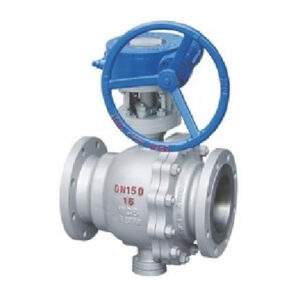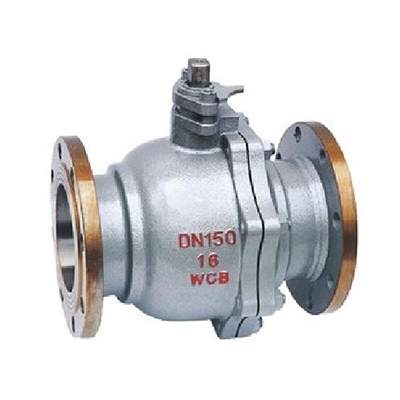Introduction

Fire protection ball valves are indispensable components of modern fire protection systems. These specialized valves play a critical role in controlling the flow of water or other firefighting agents, ensuring efficient and effective fire suppression. This comprehensive guide will delve into the intricacies of fire protection ball valves, covering their types, applications, benefits, selection criteria, installation, and maintenance. By understanding these key aspects, you can make informed decisions to protect your property and enhance your fire safety measures.
Understanding Fire Protection Ball Valves
Fire protection ball valves are designed to withstand the extreme conditions associated with firefighting, including high temperatures and pressures. They feature a spherical ball that rotates within the valve body, providing a quick and reliable shutoff mechanism. This design offers several advantages over traditional gate valves, including faster operation, lower maintenance requirements, and a more compact footprint.
Types of Fire Protection Ball Valves
Various types of fire protection ball valves are available, each tailored to specific applications and requirements:
- Full Port Ball Valves: These valves offer a full flow path, minimizing pressure drop and ensuring maximum flow rate. They are ideal for applications where high flow rates are critical, such as fire sprinkler systems and fire hydrant systems.
- Reduced Port Ball Valves: Reduced port ball valves have a smaller opening, which can be beneficial in certain applications, such as controlling flow rates to specific areas or devices. They are commonly used in industrial fire protection systems and foam systems.
- Three-Way Ball Valves: Three-way ball valves offer multiple flow paths, allowing for diverse piping configurations. They are versatile and can be used in various applications, including diverting flow to different outlets or isolating sections of a piping system.
Applications of Fire Protection Ball Valves
Fire protection ball valves are widely used in a variety of applications to safeguard property and lives:
- Fire Sprinkler Systems: Controlling the flow of water to sprinkler heads, ensuring rapid fire suppression.
- Fire Hydrant Systems: Regulating the flow of water from fire hydrants, enabling firefighters to access water supplies efficiently.
- Fire Pump Systems: Controlling the flow of water from fire pumps, ensuring adequate water pressure and flow rate.
- Foam Systems: Controlling the flow of foam concentrate, enabling the generation of foam to suppress fires.
- Industrial Fire Protection Systems: Protecting industrial facilities, such as factories, warehouses, and refineries, from fire hazards.
Benefits of Fire Protection Ball Valves
Fire protection ball valves offer numerous benefits that contribute to their widespread use:
- Rapid and Reliable Shutoff: The spherical ball design allows for quick and positive shutoff, preventing the spread of fire and minimizing water damage.
- Durability and Longevity: Constructed from high-quality materials like stainless steel or bronze, these valves are highly durable and resistant to corrosion, ensuring long-lasting performance.
- Low Maintenance Requirements: Ball valves require minimal maintenance, reducing operational costs and downtime.
- Versatility: Available in a wide range of sizes, configurations, and materials, ball valves can be tailored to specific applications and environmental conditions.
Selection Criteria for Fire Protection Ball Valves
When selecting fire protection ball valves, consider the following factors:
- Pipe Size: Ensure compatibility with the pipe size in your system to avoid restrictions and pressure drops.
- Pressure Rating: The valve must be rated for the maximum pressure expected in the system to prevent failures and leaks.
- Temperature Rating: The valve must be capable of withstanding the maximum temperature in the system, especially in high-temperature applications.
- Material Compatibility: The valve material must be compatible with the fluid being handled to prevent corrosion and other adverse reactions.
- End Connections: Choose the appropriate end connections (e.g., threaded, flanged, or socket weld) based on your piping system.
- Fire Rating: Ensure the valve meets the required fire rating to withstand fire exposure and maintain functionality.
- Certification and Standards: Verify that the valve complies with relevant industry standards and certifications, such as UL, FM, or ANSI.
Installation and Maintenance

Proper installation and maintenance of fire protection ball valves are crucial for optimal performance and longevity. Follow these guidelines:
- Installation:
- Ensure that the valve is installed in the correct orientation and securely fastened to the piping system.
- Verify that the valve is fully open or closed, as required.
- Conduct a pressure test to identify any leaks or defects.
- Maintenance:
- Inspect the valve regularly for signs of wear, damage, or corrosion.
- Lubricate the valve stem as recommended by the manufacturer.
- Perform a functional test to ensure proper operation.
- Replace any damaged or worn components promptly.
Conclusion
Fire protection ball valves are essential components of comprehensive fire protection systems. By understanding their types, applications, benefits, and selection criteria, you can make informed decisions to protect your property and enhance your fire safety measures. By following proper installation and maintenance practices, you can ensure the reliable and efficient operation of your fire protection ball valves, safeguarding lives and property from fire hazards.
FAQ
What is the difference between a fire protection ball valve and a standard ball valve?
Fire protection ball valves are specifically designed to withstand high temperatures and pressures associated with firefighting. They often have additional features like fire-resistant seals and coatings to ensure reliable performance in extreme conditions.
How often should fire protection ball valves be inspected?
The frequency of inspections depends on factors such as the valve’s location, usage, and local regulations. However, annual inspections are generally recommended to identify potential issues like leaks, corrosion, or damage.
What materials are commonly used for fire protection ball valves?
Common materials used for fire protection ball valves include stainless steel, cast iron, and bronze. The choice of material depends on factors like the valve’s intended application, the fluid being handled, and the environmental conditions.
Can fire protection ball valves be used in high-temperature applications?
Yes, fire protection ball valves are designed to withstand high temperatures. However, it’s crucial to select a valve with a suitable temperature rating to ensure its performance and longevity.
How do I select the correct size of fire protection ball valve for my application?
The correct size of a fire protection ball valve depends on the flow rate and pressure requirements of your specific application. Consult with a qualified engineer or refer to the manufacturer’s guidelines to determine the appropriate size.
